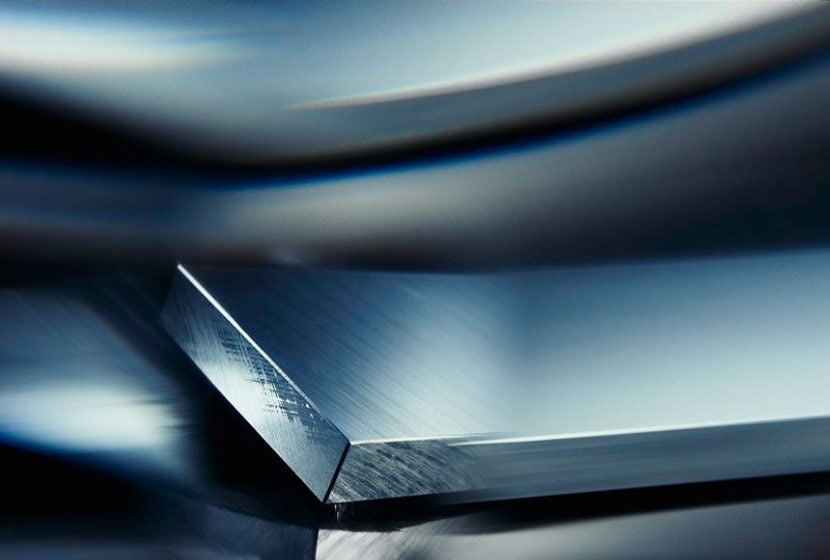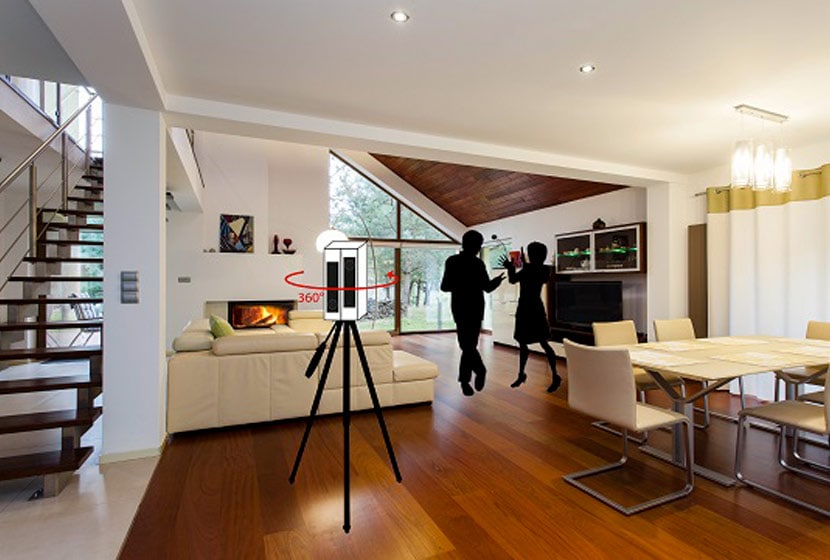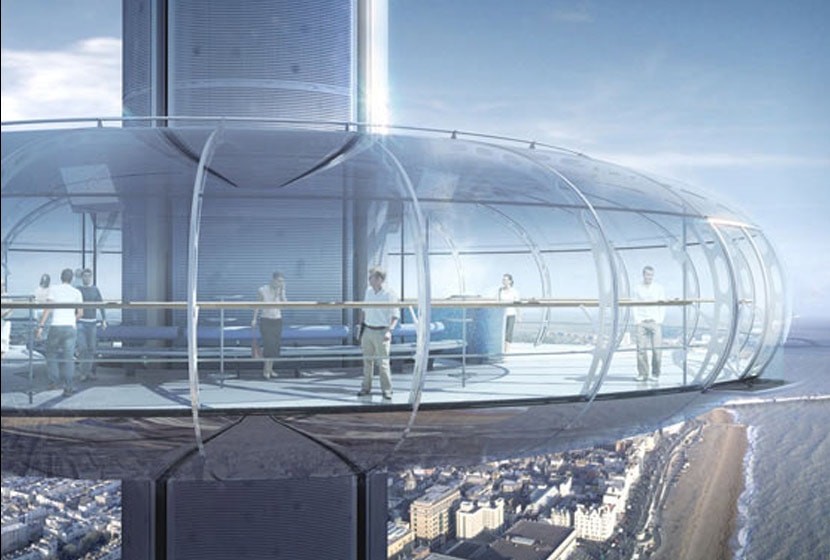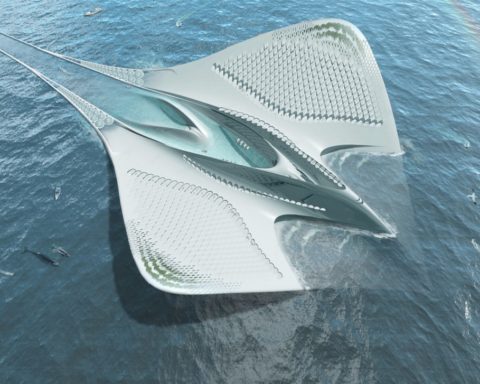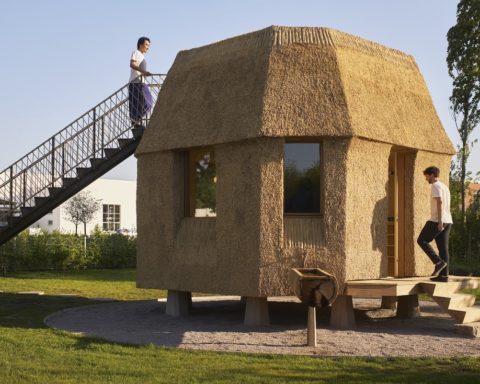Improving the quality of daily life has always been one of man's major concerns. Not forgetting the thermal renovation of buildings, one of the major challenges of our society in a context of increasing scarcity of energy raw materials. It is in this context that we are constantly looking for new materials that are more efficient, more ecological and better adapted to the constraints and requirements of the times.
Current trends, now supported by the evolution of regulations, make energy performance a decisive research criterion in the development of innovative materials: insulation, building materials,...; it is a question of completely rethinking the habits that have governed the construction industry over the last three decades and optimising the properties of tomorrow's materials. One approach developed to manufacture nanocomponents consists of assembling matter atom by atom or molecule by molecule to build nano-objects that will then be integrated into more complex systems. These are called nanomaterials.
Needs and regulations create diversity, but also new techniques such as 3D printing which now allows the use of certain families of materials.
New materials have always accompanied scientific and technical progress. If working with the infinitely small represents the most significant technological breakthrough of the last twenty years, other revolutions are in the offing. Strongly correlated with constantly adapting manufacturing processes, the materials of today and tomorrow are high-tech synthetic products, take the form of composites with almost infinite combinations or are structured differently for new properties. Materials with a boundless imagination, unthinkable only a few years ago. Let's have a look around.
Tomorrow's materials
 Paper bricks
Paper bricks
The American start-up BetR-blok has designed real "bricks" from a mixture of cement and cellulose from recycled paper and cardboard. "With the amount of paper wasted each year in the United States, a 15-metre high wall could be built around the country," say its designers, who intend to fight against this waste. Their brick is also an excellent acoustic insulator, resistant to mould and fire: the idea was to make thin soundproofing panels out of a material that is light and soft enough, such as cardboard or paper, to facilitate communication between holes and effectively trap noise.
High performance concrete
Concrete is the most widely used manufactured material in the world, but its physico-chemical behaviour remains one of the most poorly known. In France, 60 million m3 of concrete are used every year, i.e. 1 m3 per inhabitant. Modern concrete contains less than 10% of cement, the rest being sand and gravel. While cinder block (concrete rubble) and hollow brick were widely used after the end of the Second World War, new materials are now needed to meet new insulation standards. Recent constructions use wood or steel framed systems, cellular concrete or Monomur brick.
 - Transparent Concrete :
- Transparent Concrete :
But here's the concrete LiTraCon ( LIght TRAnsmitting CONcrete), invented by a Hungarian architect. It transforms walls into shadow theatres. These blocks of concrete, which have exactly the same mechanical qualities as conventional concrete, nevertheless allow light to pass through thanks to optical fibres inserted inside the concrete itself. A real innovation, each block is a combination of optical fibre and very fine concrete, a homogeneous structure that lets light through.
A product distributed in France by Byzantium Design.
 - Eternal concrete:
- Eternal concrete:
A concrete structure exposed to external aggressions (snow, sea salt, pollution...) is a victim of corrosion over time, causing cracks and deformations to appear. A team of researchers from the University of Wisconsin-Milwaukee, led by Professor Konstantin Sobolev, have developed a "super concrete". called SECC, more resistant, repels water and even has a certain flexibility. Known as SECC (Superhydrophobic Engineered Cementitious Composite), it has such a high level of crack resistance that researchers estimate its lifespan at 120 years. Its particular structure also allows it to withstand compression four times greater than that of reinforced concrete and it has a ductility (capacity to be deformed without breaking) 200 times greater. In comparison, the average life of Wisconsin's concrete roads is around 40 to 50 years, and 10 % of bridge decks require replacement after 30 years.
In addition, to ensure that this new material is actually stronger than traditional concrete, the team incorporated electrodes into its test section (4.5 m by 1.2 m), about 2.5 cm below the surface. They are connected to a system that records data and can detect whether water is penetrating the concrete and how deep it is. They can also detect the presence of chloride ions in the material, and can sense the weight and pressure exerted by vehicles as they pass over it. (Report on work in progress can be found here).
In the process of being commercialized.

Glued Laminated Timber - Cross Laminated Timber (CLT)
It would make it possible to build buildings from ten to thirty storeys high. This manufacturing process consists of assembling strips of wood (spruce, Douglas fir, etc.) with glue and makes it possible to obtain very large pieces in the desired shapes, as solid as reinforced concrete.
Following the example of the Stadthaus, designed by the architect Andrew Waugh, in the London district of Hackney: this building is constructed of wood, from floor to ceiling, through the lift and stairwells. Inaugurated in 2009, it is then the highest wooden building in the world. It will soon be surpassed by the Forté in Melbourne in 2012 and the Barents in Kirkenes in 2014. But the architects hope to go much higher in the coming years! A thirty-four-storey tower in Stockholm? And why not a forty-two-storey wooden skyscraper in Chicago?
Photo: HP Copyright © 2013 Yellowtrace
 A heat regulating coating
A heat regulating coating
The Micronal PCM, manufactured by BASF,is a so-called "phase-change" material, i.e. it changes with temperature, which regulates the heat. It is in the form of polymer microbeads containing wax. When the temperature rises, the wax absorbs heat and stores it. When the temperature decreases, the wax in the microbeads releases the stored latent heat.
During the phase change period, the temperature remains constant and allows the temperature to be regulated to comfortable levels between 22 and 26°C. At 21°C, 23°C or 26°C, depending on the user's choice, the paraffins it contains melt, absorbing the surrounding heat.
Thanks to micro-encapsulation Micronal can be incorporated into building materials. Thus, they are intended for paint and plasterboard manufacturers.
Micronal are indestructible, inert and non-toxic. They are available in liquid or powder form.
 Electrochromic glazing (or automatic occultation)
Electrochromic glazing (or automatic occultation)
Incorporating titanium or tungsten oxides, these panes darken on demand and reduce air-conditioning requirements while maintaining good luminosity to optimize energy consumption. In summer or in very bright weather, you can imagine having coloured glazing in order to limit glare and heating; conversely, in winter or in overcast weather, the glazing remains faded to take advantage of the sun's rays.
In addition to being insulating, under the effect of a weak electric current, this glass can change from a clear to a tinted state (and vice versa) while remaining transparent. The outer glass of double or triple glazing is covered with thin layers of metal with a total thickness of less than 1/50 of human hair. When a weak current passes through the coating, ions move from one layer to the other causing the glass to be tinted, reducing the amount of light passing through. Reversing the polarity of the current causes the ions to return to their original layer, returning the glass to its clear state. The complete system includes control electronics that allow the glass to manage light transmission through 4 different tint levels.
This technology applies the principle of oxidation/reduction (a reaction in which an electron transfer occurs). It can be controlled automatically, manually or both, in order to adapt to the needs of different buildings.
Industrialized by Saint-Gobain under the brand name Quantum Glass.
 Breathable and waterproof membrane
Breathable and waterproof membrane
Stamisol is a composite wall with an "exceptional" longevity, according to its designer, the industrial group Serge Ferrari. Resistant to high UV exposure and perfectly waterproof, it allows the evacuation of humidity inside the building, thus avoiding the risks of condensation and mildew.
Stamisol is the ideal choice behind a transparent, openwork or creative ventilated facade. A wide range of colours allows architects to create unique facades (transparency, depth, dynamism, etc.).
 Ultra insulating silica aerogel
Ultra insulating silica aerogel
The Nanogel Lumira, manufactured by the company Cabot Corporation (Boston - USA) is quite simply one of the most efficient insulators in the world. Made up of 97% of vacuum and amorphous silica grains (which unlike crystalline silica has virtually no toxicity), it is therefore transparent and UV stable. It is not only an exceptional thermal insulator, 3 to 6 times better than conventional materials, but also an excellent acoustic insulator, ideal for apartments, offices or hospitals for example, while allowing light to pass through.
 Shock, noise and pollution plaster
Shock, noise and pollution plaster
High-density plasterboard with high surface hardness and impact resistance, improving air quality and acoustic comfort. It is composed of a specific gypsum crystalline structure with the addition of 2% of wood fibres, fully recyclable (on the plasterboard production site). The Placo Impact Activ'Air is four times stronger than standard plasterboard. Above all, it has depolluting virtues: a specific component, incorporated at a level of 0.2% in the plaster, captures 80% of volatile organic compounds (VOCs) and transforms them into inert compounds. Ideal for partitions and walls in children's rooms for example. And its qualities don't stop there: it also reduces the noise of 50% and has a very high resistance to shocks: tests carried out, simulating repeated kicks and table blows, have shown a resistance 4 times higher than that of a standard board. This resistance also allows the wall to support heavy loads (up to 30 % higher than a standard plate) using suitable fasteners (flat screen, furniture...).
www.placo.fr
Cellular ceramics
Cellular ceramics are characterized by a porous architecture whose pore size can be modulated from a few microns to a few nanometers. The morphology varies according to the techniques of elaboration and the nature of the raw materials (in particular the pore-forming agents). We can thus obtain foams, honeycombs, assembled hollow spheres, connected fibres.
These foams have many advantages over other cellular materials, including a greater pressure drop, lower operating temperature, isotropic structure allowing better gas penetration, more homogeneous filtration, the presence of cracks that do not affect filtration and better thermal resistance.
Cellular ceramic materials are produced by first mixing clay, carbon and about 40 % to about 70 % of water by weight of clay in the mixture, allowing the mixture to harden, drying the hardened mixture, and then firing the dried mixture at a temperature and for a period of time sufficient to melt the surface of the mixture. The clay material may be, for example, surface clays, ball clays, kaolin, shale, fly ash and/or bentonite. Alternatively, a mixture of volcanic ash, carbon and water can be formed and layered with the mixture of clay, carbon and water. Cellular ceramic materials are, in most cases, impermeable to liquids, are capable of withstanding high tensile and compressive loads without reinforcement, and require no additional insulating material. Such cellular ceramic material can also be used in the construction of buildings that have a metal skeleton comprising metal bars that form a structure to support the cellular ceramic building material.
The development of cellular ceramic materials is mainly used for the production of bone substitutes in the medical field.
 Materials from 3D printing
Materials from 3D printing
We know that, in partnership with the Missouri University of Science and Technology in the United States, NASA, the American space agency, launched a research programme in 2013 for the development of innovative materials that are much more resistant than current manufacturing materials.
For example, Dr. Frank Liou, director of the LAMP (Laser Aided Manufacturing Process) laboratory confirms that steel produced by 3D printing methods is 10% stronger than by conventional methods.
Families of materials that can be used in 3D printing :
- Plastics: PLA, ABS
- Polymers: Wood, Stone
- Metals: Gold, Silver, Aluminium, Steel, Cobalt, etc.
- Resins
- Waxes
- Ceramics
- Concrete
Active materials of the future
Driven by the search for energy efficiency, manufacturers are developing increasingly active materials.  Meta-composites see even further than composites, by including electronic circuits, piezoelectric materials, sensors and resonators in a polymer matrix. Their design is based on a distributed approach to the laws of control within a structure. With its team of researchers led by Manuel Collet, the Applied Mechanics Department of FEMTO-ST is the specialist in this field in France.
Meta-composites see even further than composites, by including electronic circuits, piezoelectric materials, sensors and resonators in a polymer matrix. Their design is based on a distributed approach to the laws of control within a structure. With its team of researchers led by Manuel Collet, the Applied Mechanics Department of FEMTO-ST is the specialist in this field in France.
In an effort to reduce costs, particularly energy costs, the aeronautics industry, civil engineering and the nuclear sector are using increasingly light structures, which also pose problems of strength, stability and fatigue, which meta-composites can remedy. In order to guarantee their optimal functioning, it is crucial to control vibrations, which are all the more important as the structures are light.
Damping polymers are included in the material to control and prevent the propagation of surface acoustic waves, on what Manuel Collet calls their "active skin". "We're working on the audible frequencies, between a few hundred and 20,000 hertz, which represents a centimetric structuring of the material with MEMS inclusions at the submillimeter scale. »
In parallel to this vibration control, sensors and actuators provide functions for self-evaluation and adaptation of the material itself, which places it in the futuristic range of active materials.
Smart systems s collect data on the health of the components, their level of fatigue, their risk of failure, and are able to make a prognosis of their remaining service life. The shape control is a perfect illustration of the research carried out at FEMTO-ST. In the material, a sensor is able to capture information from the outside and transmit it to an actuator that will trigger a modification of the structure. Thus, an aircraft wing made of this type of material will be able to adapt its shape in the future by taking into account parameters such as the air flow speed in order to optimise, for example, the aerodynamic lift.
The FEMTO-ST Institute and industrialists are working closely together on these promising topics. In 2017, the work carried out for aviation with SNECMA will take the form of tests close to reality. Future launches of Ariane V (ASTRIUM) should give rise to flight tests as early as 2015. (Source: UFC - University of Franche-Comté 2013)
![]()
Cf "The materials of the future" - ARTE TV
Cf Saint-Gobain's Research Laboratory for Materials of the Future
Cf innovative materials watch website www.materio.com

